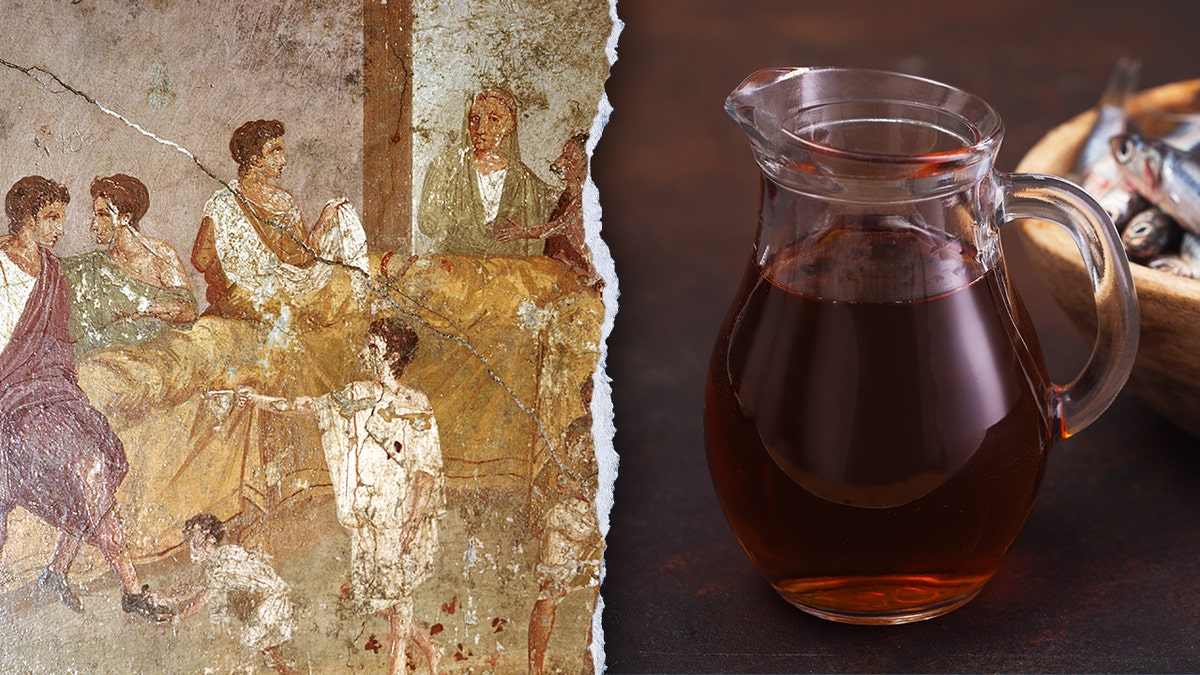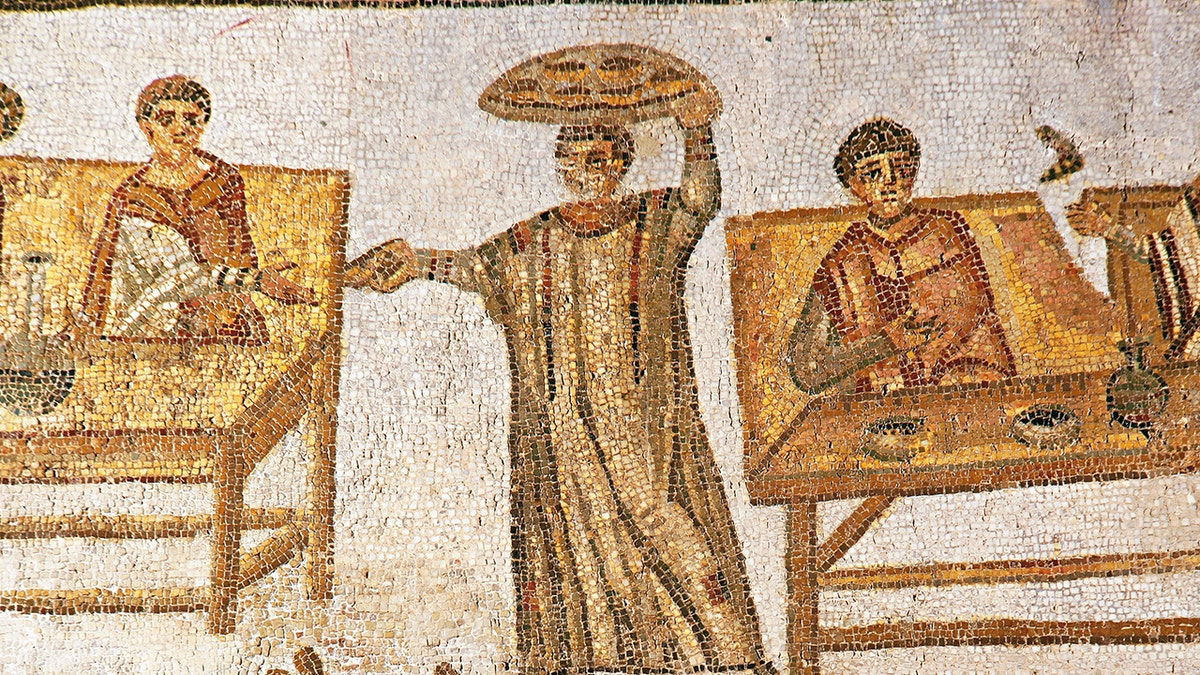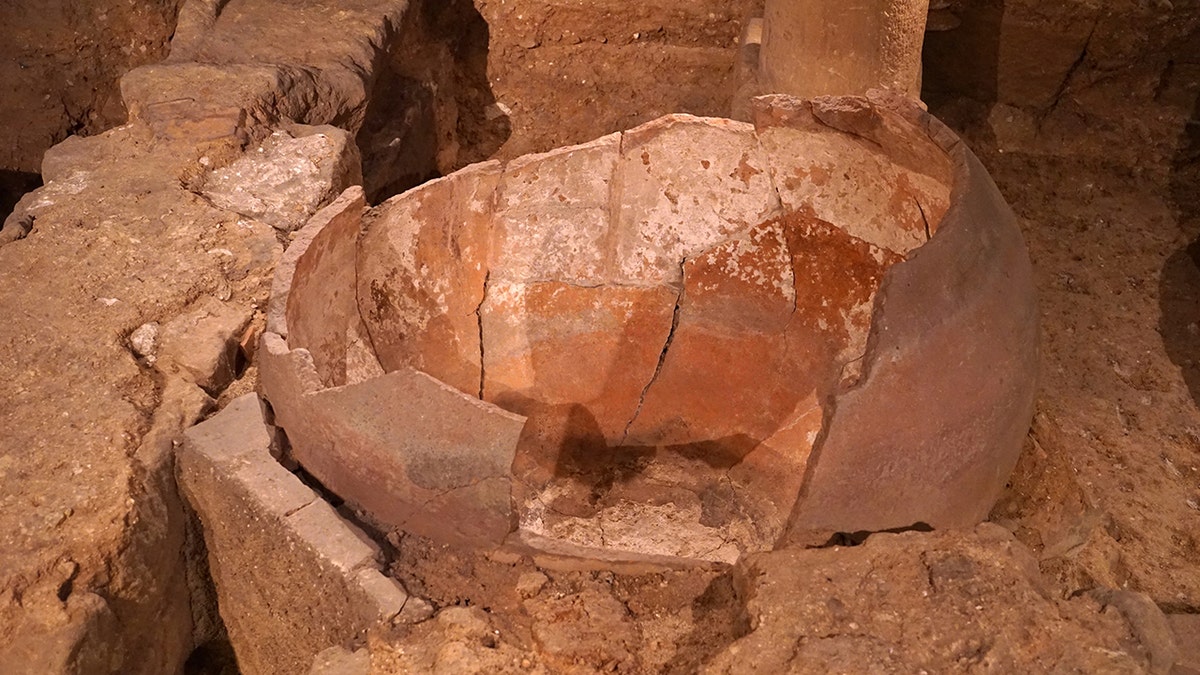NEWYou can now listen to Fox News articles!
Ancient Romans had a big appetite for a certain kind of fish sauce – and a new study is revealing exactly what went into it.
Researcher Gonçalo Themudo published his findings in the journal Antiquity on July 2. The research centered around garum, a fermented fish sauce that Ancient Romans enjoyed as a popular condiment.
Themudo, a biologist based in Portugal, was able to recover DNA from the fish remains in an ancient garum-making vat at Adro Vello, an archaeological site in Galicia, Spain.
ORDINARY ANCIENT ROMANS ATE 'LUXURY' MEAT AT FAST-FOOD SHOPS, NEW RESEARCH REVEALS
At the bottom of the vat, researchers uncovered small, fragmented fish bones – mostly vertebrae – that were remarkably well-preserved.
They were 1,800 years old and heavily processed during fermentation, yet the DNA in the bones was still intact enough to study.
Themudo successfully recovered and sequenced the genetic material, with the results confirming the ancient sauce was primarily made from sardines.

A biologist told Fox News Digital about recovering the DNA from a vat used to make garum, at right, a once-popular condiment in Ancient Rome. (CM Dixon/Print Collector via Getty Images; iStock)
"We knew from other sources and from the morphological identification that these should be sardines," Themudo told Fox News Digital.
"But there was always a possibility the morphology was wrong because these were based on loose and very small vertebrae bones."
"Romans most likely liked its rich flavor and versatility as a condiment – and prices seem to have matched their fondness for it."
The recovery of viable DNA was unexpected.
Themudo said he was "really doubting" it.
STUDENTS COOK ANCIENT RICE DISH BASED ON 2,000-YEAR-OLD MANUSCRIPT WITH SURPRISINGLY HEALTHY RESULTS
"It was a real surprise when we got some positive results for the presence of DNA and then when we were able to match it to sardine DNA," he said.
The sauce was exported widely across the Roman Empire, meaning the local sardines were probably being used to season dishes far away.

The sauce was widely exported and enjoyed by people in antiquity, with evidence of trade throughout the Roman Mediterranean. (DeAgostini via Getty Images)
Themudo said that garum was "full of glutamates, giving it a rich umami or savory taste, similar to what you get in modern fish sauces, broths, shellfish, mushrooms or some cheeses."
CLICK HERE TO SIGN UP FOR OUR LIFESTYLE NEWSLETTER
"Romans most likely liked its rich flavor and versatility as a condiment – and prices seem to have matched their fondness for it," Themudo noted.
"It could be used as fish broth and used to season meat or fish during preparation of meals."
He also compared garum to soy sauce — or, to be more accurate, the fish sauce commonly enjoyed in Southeast Asian cuisine today.
"It would probably also have a strong fish smell," he said. "It could be used as fish broth and used to season meat or fish during preparation of meals."

Seen above are the remains of an ancient garum factory in Barcelona, Spain. The recent study centered around a garum factory in Galicia (not pictured). (Universal History Archive/Universal Images Group via Getty Images)
The study also underscores the value of ancient DNA research, Themudo stressed.
DNA molecules degrade over time, breaking into ever-smaller fragments due to chemical and physical damage, particularly in fermented products, Themudo said.
For more Lifestyle articles, visit foxnews.com/lifestyle
"Think of [DNA] as narrow and extremely long sheets of paper filled with the letters A, C, G and T," Themudo said.
"Someone takes those sheets of paper and starts tearing them in half, and then takes each half and tears those, and so on. As time passes, the pieces of paper become [so] small that they become unreadable."

Garum was filled with glutamates, "giving it a rich umami or savory taste," a researcher said. Pictured is a modern reconstruction of the sauce. (iStock)
The discovery also shows that, even in difficult conditions, ancient DNA can survive — and be deciphered.
CLICK HERE TO GET THE FOX NEWS APP
"This study not only proves that we can extract and sequence ancient DNA from fermented fish remains," he said. "It also opens new avenues to the study of population dynamics of these fish species through time."

 7 hours ago
4
7 hours ago
4

















































